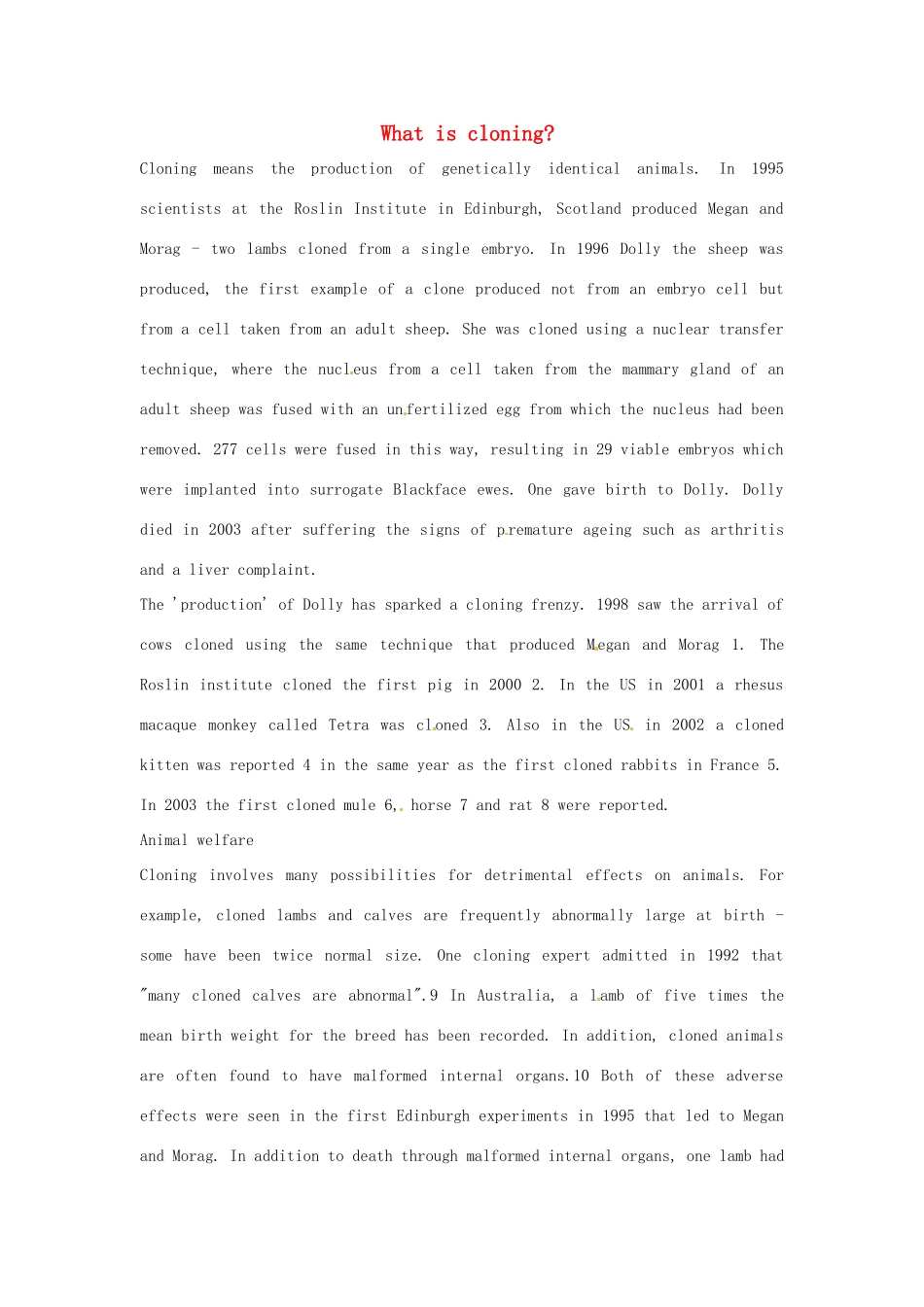What is cloning?Cloning means the production of genetically identical animals. In 1995 scientists at the Roslin Institute in Edinburgh, Scotland produced Megan and Morag - two lambs cloned from a single embryo. In 1996 Dolly the sheep was produced, the first example of a clone produced not from an embryo cell but from a cell taken from an adult sheep. She was cloned using a nuclear transfer technique, where the nucleus from a cell taken from the mammary gland of an adult sheep was fused with an un fertilized egg from which the nucleus had been removed. 277 cells were fused in this way, resulting in 29 viable embryos which were implanted into surrogate Blackface ewes. One gave birth to Dolly. Dolly died in 2003 after suffering the signs of p remature ageing such as arthritis and a liver complaint.The 'production' of Dolly has sparked a cloning frenzy. 1998 saw the arrival of cows cloned using the same technique that produced M egan and Morag 1. The Roslin institute cloned the first pig in 2000 2. In the US in 2001 a rhesus macaque monkey called Tetra was cl oned 3. Also in the US in 2002 a cloned kitten was reported 4 in the same year as the first cloned rabbits in France 5. In 2003 the first cloned mule 6, horse 7 and rat 8 were reported.Animal welfareCloning involves many possibilities for detrimental effects on animals. For example, cloned lambs and calves are frequently abnormally large at birth - some have been twice normal size. One cloning expert admitted in 1992 that "many cloned calves are abnormal".9 In Australia, a l amb of five times the mean birth weight for the breed has been recorded. In addition, cloned animals are often found to have malformed internal or...


